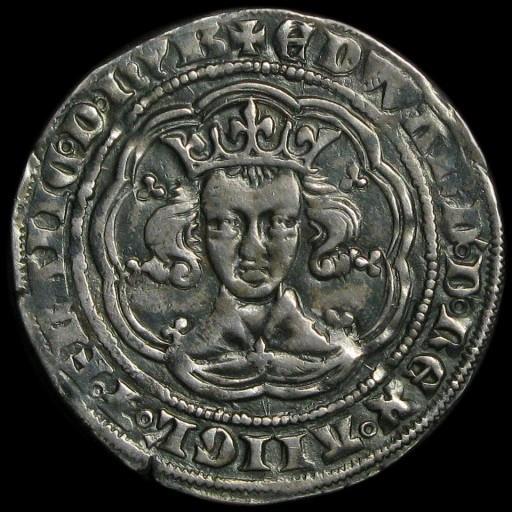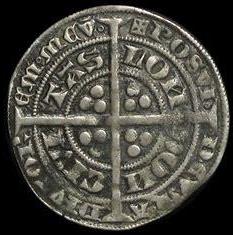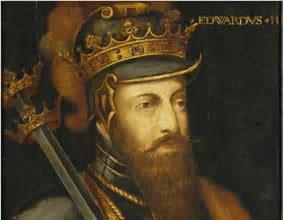








Designed by Nigel G Wilcox






The Paragon Of Metal Detecting
Powered By Sispro1
British Sterling Currency - Numismatics,
Groat
For Reference ONLY
Everything For The Detectorist
Groat
Edward III 1327-1377 AD
Royal Monarchy
Copyright All Rights Reserved by Nigel G Wilcox E-Mail: ngwilcox100@gmail.com
INFORMATION - DATA
Pages


Silver Groat
It was after the French silver coin had circulated in England that an English groat was first minted under King Edward I.
Scots groats were not issued until the reign of David II. Scots groats were originally also worth fourpence, but later issues were valued at eightpence and a shilling.
Irish groats were minted first in 1425 and the last ones were minted under the reign of Elizabeth I of England. There were also two more issues, both emergency coinage.
While strictly speaking, the English groat should have contained four pennyweights or 96 grains (6.2 grams) of sterling silver, the first ones issued weighed 89 grains (5.8 g) and later issues became progressively lighter. The weight was reduced to 72 grains (three pennyweights or 4.7 g) under Edward III, 60 grains (3.9 g) under Henry IV, and 48 grains (3.1 g) under Edward IV. From 1544 to 1560 (the weight being reduced to 32 grains (2.1 g) in 1559) the silver fineness was less than sterling, and after the 1561 issue they were not generally issued for circulation again for about a hundred years.
From the reigns of Charles II to George III, groats (by now often known as fourpences) were issued on an irregular basis for general circulation, the only years of mintage after 1786 being in 1792, 1795, and 1800. After this the only circulating issues were from 1836 to 1855, with proofs known from 1857 and 1862 and a colonial issue of 1888. These last coins had the weight further reduced to about 27 grains (1.9 grams) and were the same diameter as the silver threepenny pieces of the day although thicker. They also had Britannia on the reverse, while all other silver fourpenny pieces since the reign of William and Mary have had a crowned numeral "4" as the reverse, including the silver fourpenny Maundy money coins of the present. Some groats continued to circulate in Scotland until the 20th century.
At times in the past, silver twopenny coins have been called "half-groats."
The groat ceased to be minted in the United Kingdom in 1856, but in 1888 a special request was made for a colonial variety to be minted for use in British Guiana and the British West Indies. The groat remained in circulation in British Guiana right up until that territory adopted the decimal system in 1955.
Edward III was King of England and Lord of Ireland from 25 January 1327 until his death; he is noted for his military success and for restoring royal authority after the disastrous and unorthodox reign of his father, Edward II. Edward III transformed the Kingdom of England into one of the most formidable military powers in Europe. His long reign of 50 years was the second longest in medieval England and saw vital developments in legislation and government-in particular the evolution of the English parliament-as well as the ravages of the Black Death.
Scots groats were not issued until the reign of David II. Scots groats were originally also worth fourpence, but later issues were valued at eightpence and a shilling.
Irish groats were minted first in 1425 and the last ones were minted under the reign of Elizabeth I of England. There were also two more issues, both emergency coinage.
While strictly speaking, the English groat should have contained four pennyweights or 96 grains (6.2 grams) of sterling silver, the first ones issued weighed 89 grains (5.8 g) and later issues became progressively lighter. The weight was reduced to 72 grains (three pennyweights or 4.7 g) under Edward III, 60 grains (3.9 g) under Henry IV, and 48 grains (3.1 g) under Edward IV. From 1544 to 1560 (the weight being reduced to 32 grains (2.1 g) in 1559) the silver fineness was less than sterling, and after the 1561 issue they were not generally issued for circulation again for about a hundred years.
From the reigns of Charles II to George III, groats (by now often known as fourpences) were issued on an irregular basis for general circulation, the only years of mintage after 1786 being in 1792, 1795, and 1800. After this the only circulating issues were from 1836 to 1855, with proofs known from 1857 and 1862 and a colonial issue of 1888. These last coins had the weight further reduced to about 27 grains (1.9 grams) and were the same diameter as the silver threepenny pieces of the day although thicker. They also had Britannia on the reverse, while all other silver fourpenny pieces since the reign of William and Mary have had a crowned numeral "4" as the reverse, including the silver fourpenny Maundy money coins of the present. Some groats continued to circulate in Scotland until the 20th century.
At times in the past, silver twopenny coins have been called "half-groats."
The groat ceased to be minted in the United Kingdom in 1856, but in 1888 a special request was made for a colonial variety to be minted for use in British Guiana and the British West Indies. The groat remained in circulation in British Guiana right up until that territory adopted the decimal system in 1955.
Edward III was King of England and Lord of Ireland from 25 January 1327 until his death; he is noted for his military success and for restoring royal authority after the disastrous and unorthodox reign of his father, Edward II. Edward III transformed the Kingdom of England into one of the most formidable military powers in Europe. His long reign of 50 years was the second longest in medieval England and saw vital developments in legislation and government-in particular the evolution of the English parliament-as well as the ravages of the Black Death.

Edward III
Main Coin Menu

VIEW ALL MENUS
Member NCMD
6. S. Menu
























